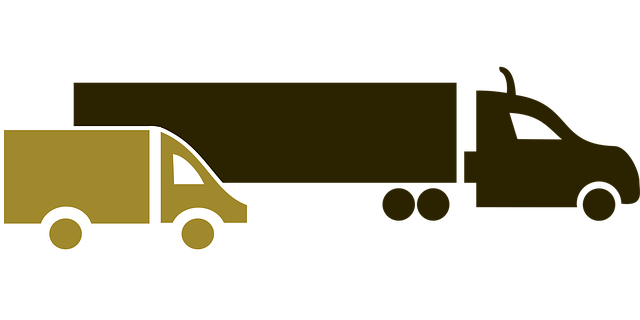Looking to register your car in California? This comprehensive guide walks you through every step, from understanding crucial requirements to securing your vehicle registration documents. We break down essential tasks like gathering necessary DMV documents and performing a VIN verification—a vital process ensuring your car’s authenticity. By following these clear instructions, you’ll efficiently navigate the process, making it hassle-free and stress-free.
- Understand California Car Registration Requirements
- Gather Necessary Documents for DMV Visit
- Perform VIN Verification: Steps & Tips
- Complete Application and Pay Fees
- Receive Your Vehicle Registration Documents
Understand California Car Registration Requirements

Before registering your car in California, it’s crucial to understand the state’s specific requirements. The California Department of Motor Vehicles (DMV) mandates several steps for new and used vehicle registrations, ensuring compliance with safety standards and legal obligations. One key aspect is the DV (Department of Motor Vehicles) vin verification process, which involves checking the vehicle’s unique identification number (VIN). This critical step helps in authenticating the car’s history, including ownership records and any reported damage or accidents.
A valid VIN inspection ensures that your vehicle meets California’s safety standards. For convenience, many services offer mobile VIN verification options, allowing you to complete this requirement without visiting a DMV office. These mobile vin verifiers streamline the process, providing instant results and peace of mind. Always ensure your car is eligible for registration by checking the necessary documents and passing any associated inspections.
Gather Necessary Documents for DMV Visit

Before heading to the DMV, make sure you gather all the essential documents required for registering your vehicle in California. This includes your vehicle’s registration certificate from the previous state, a valid driver’s license, proof of insurance, and identification documents such as a passport or state-issued ID card. Additionally, the DMV will require a vin inspection to verify the vehicle’s unique identifier (VIN).
It’s recommended to check if you can avail of a mobile vin inspection or use a mobile vin verifier service to save time. These services allow you to get your VIN verified remotely, ensuring a smoother process when you visit the DMV. This step is crucial for establishing ownership and completing the registration process successfully.
Perform VIN Verification: Steps & Tips

Before you can register your car in California, it’s crucial to perform a Vehicle Identification Number (VIN) verification. This process involves checking the VIN on the vehicle against the data in the DMV’s system to ensure it matches and is not reported as stolen or in any other way compromised. To conduct a VIN verification, start by obtaining your vehicle’s unique 17-character VIN number from either the dashboard or the vehicle’s registration documents.
Next, you can visit the California DMV website and use their online tools for this purpose, or opt for a more convenient mobile vin verification service. For a mobile vin inspection, professional services will send an inspector to your location who’ll cross-reference the VIN against state records. This step is essential to ensure that your car is safe to register and that you’re complying with California’s vehicle registration requirements. Remember, a valid and accurate VIN is critical for both safety and legal reasons.
Complete Application and Pay Fees

To register your car in California, the first step is to complete the necessary application forms. You’ll need to fill out a California Vehicle Registration Application (Form DV-140), which can be obtained online or from any California Department of Motor Vehicles (DMV) office. Make sure all the information is accurate and up-to-date, including your personal details and vehicle specifications. Once your application is ready, it’s time to submit it along with the required fees.
The fees for car registration in California vary depending on the type of vehicle and its age. You can typically pay these fees online, by mail, or in person at a DMV office. For vehicles with a valid DMV vin verification, you might be eligible for reduced rates or discounts. Consider using mobile vin verification services to ensure your vehicle’s history is accurately checked before completing the registration process. This includes utilizing a mobile vin verifier to confirm the vehicle’s identity and condition, which can streamline the entire procedure.
Receive Your Vehicle Registration Documents

After submitting your application for vehicle registration at a California DMV office or by mail, it’s time to receive your new documents. The California Department of Motor Vehicles (DMV) will issue a registration certificate and a vehicle identification number (VIN) verification report. This process ensures that the information on your car, like its unique VIN, matches the details in their records.
For added convenience, many Californians opt for a mobile vin inspection or verification service. These services send a trained professional to your location to perform a vin inspection, saving you a trip to the DMV. Having your vehicle’s registration documents ready is an essential step in ensuring a smooth ownership experience and adhering to California’s vehicle registration regulations.
Registering a car in California involves understanding specific requirements, gathering essential documents, and completing a few crucial steps. After performing a DMV VIN verification, filling out the application, and paying the associated fees, you’ll receive your vehicle registration documents. This process ensures that your vehicle complies with state regulations, enabling you to legally operate it on California roads. Remember to keep your registration up-to-date for smooth sailing every time you hit the open road.
